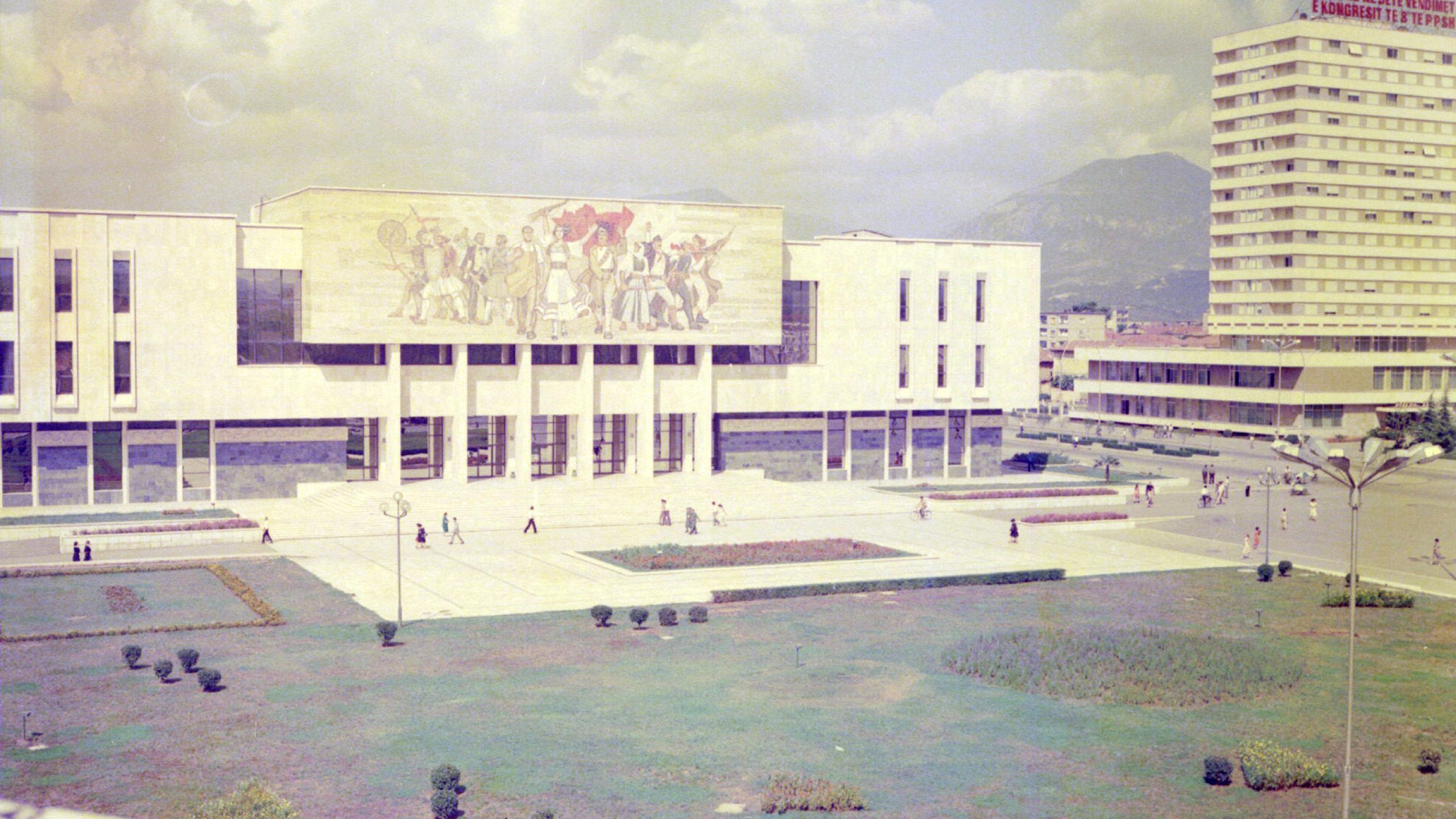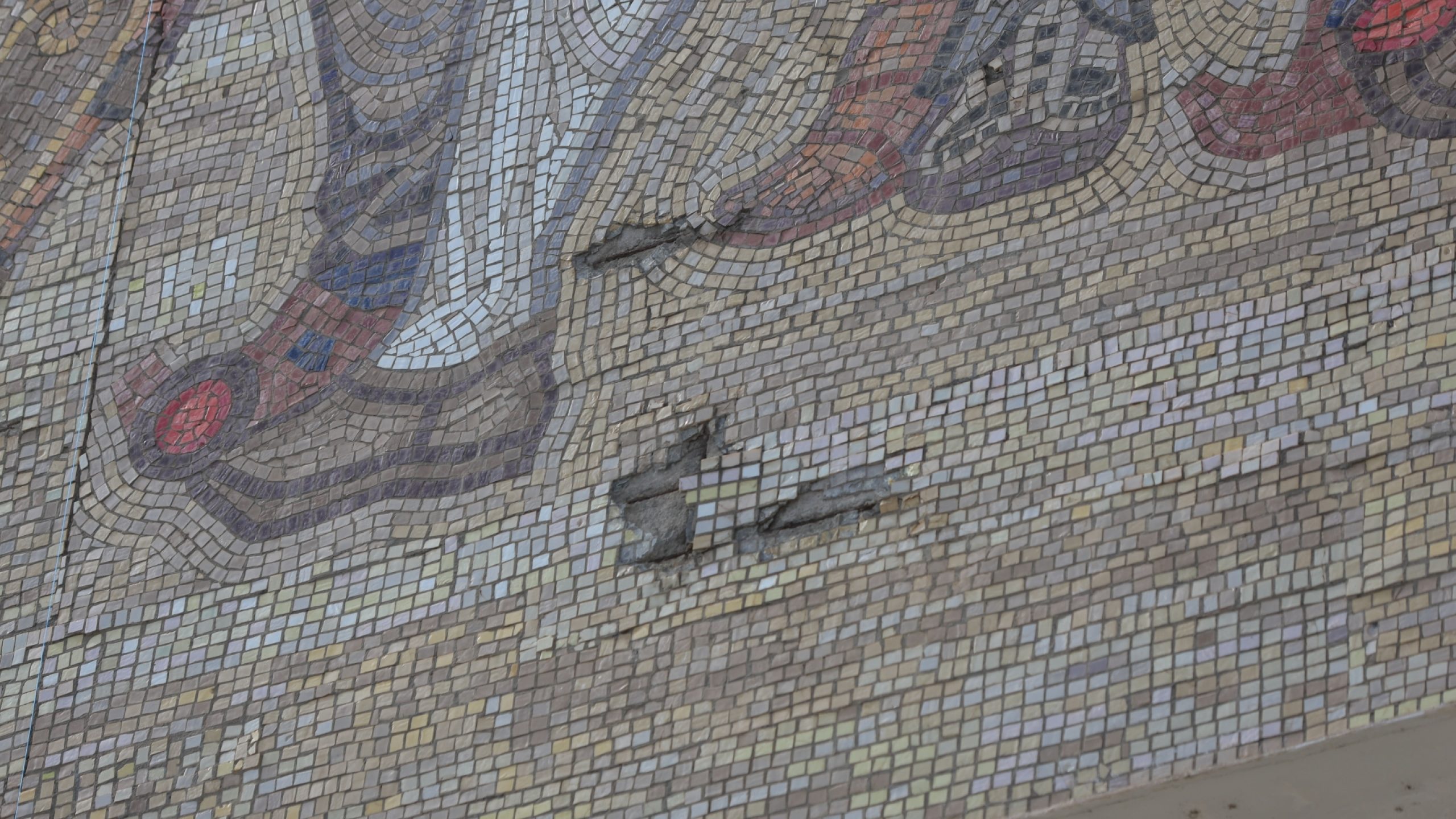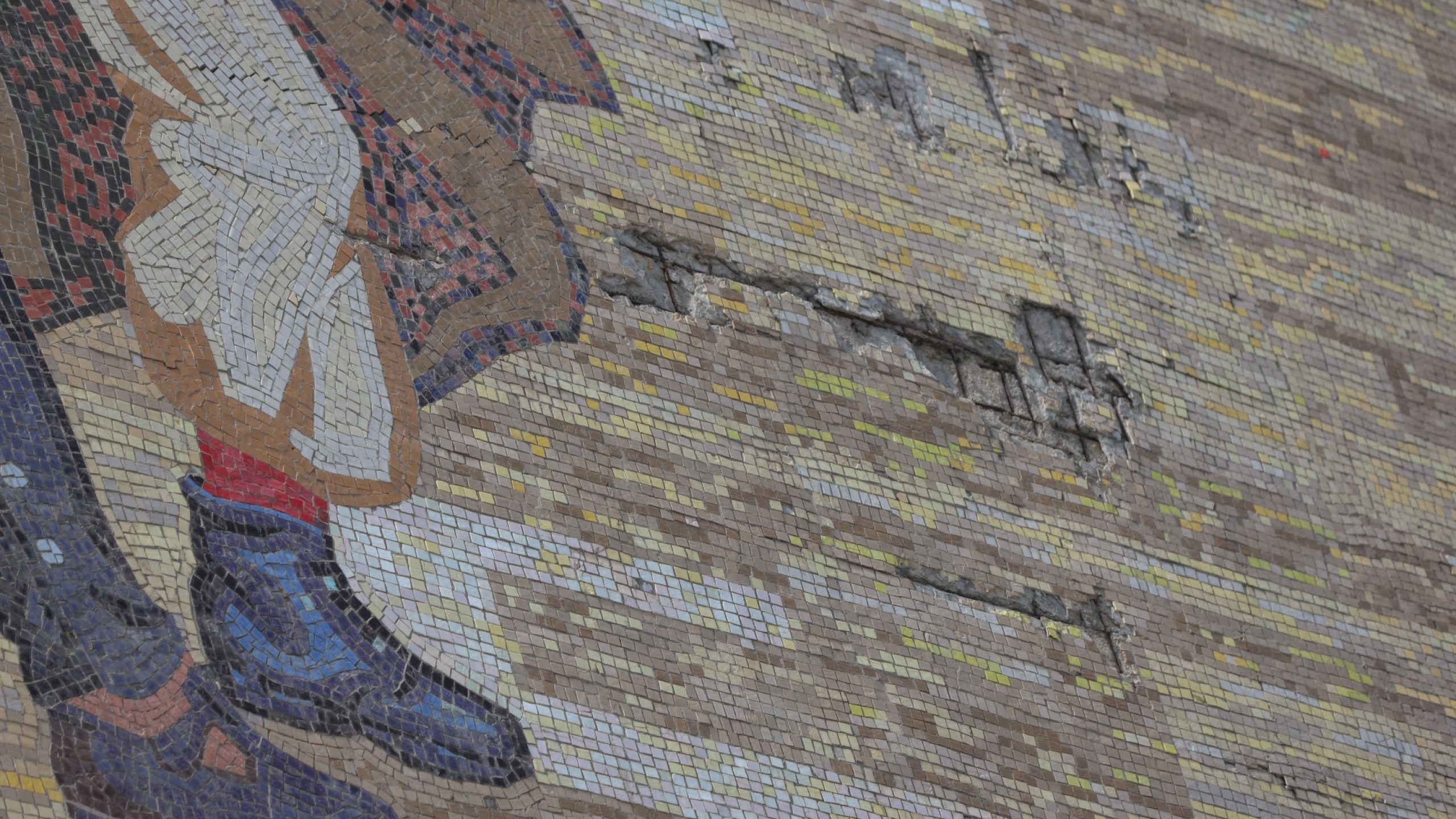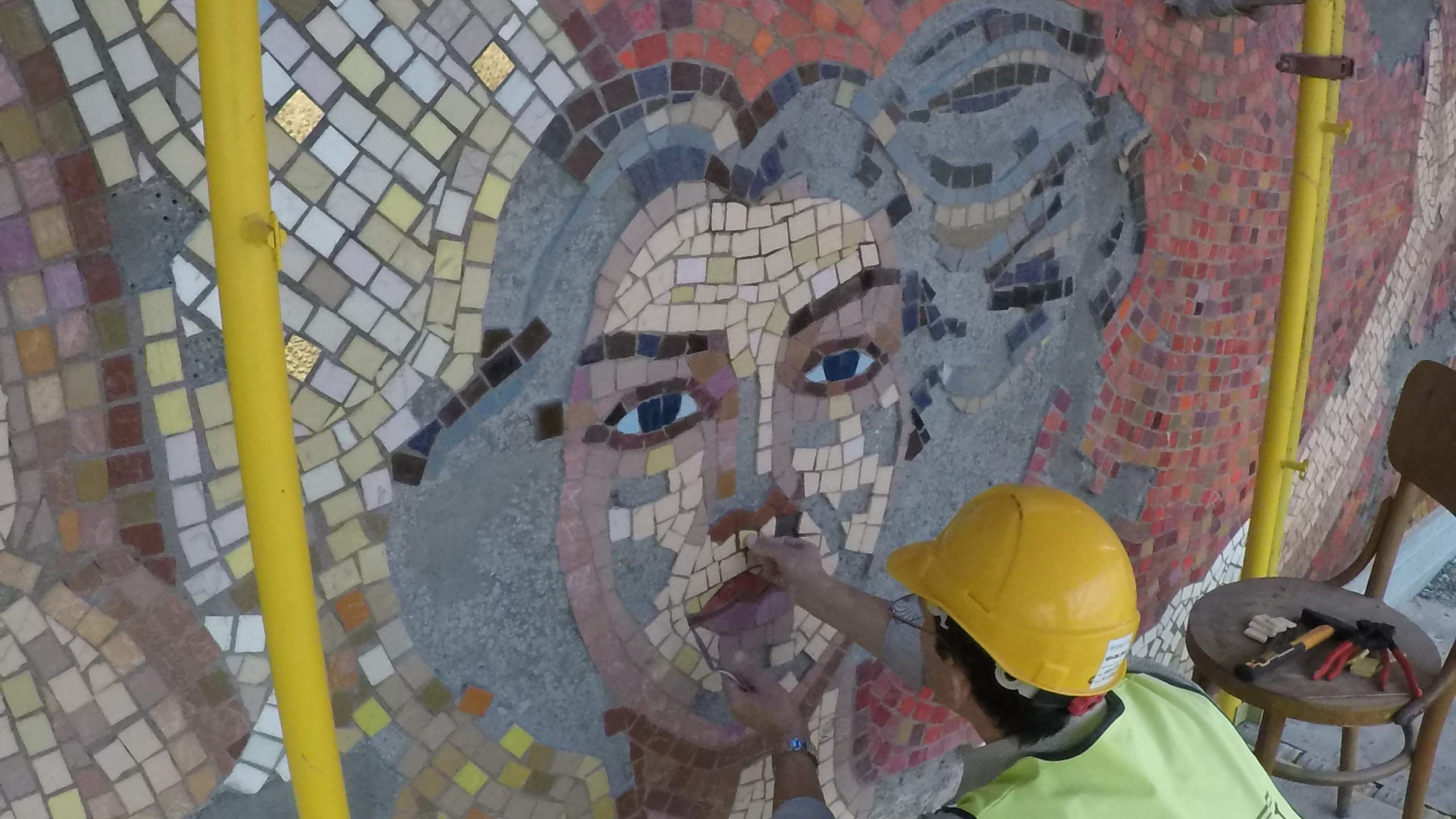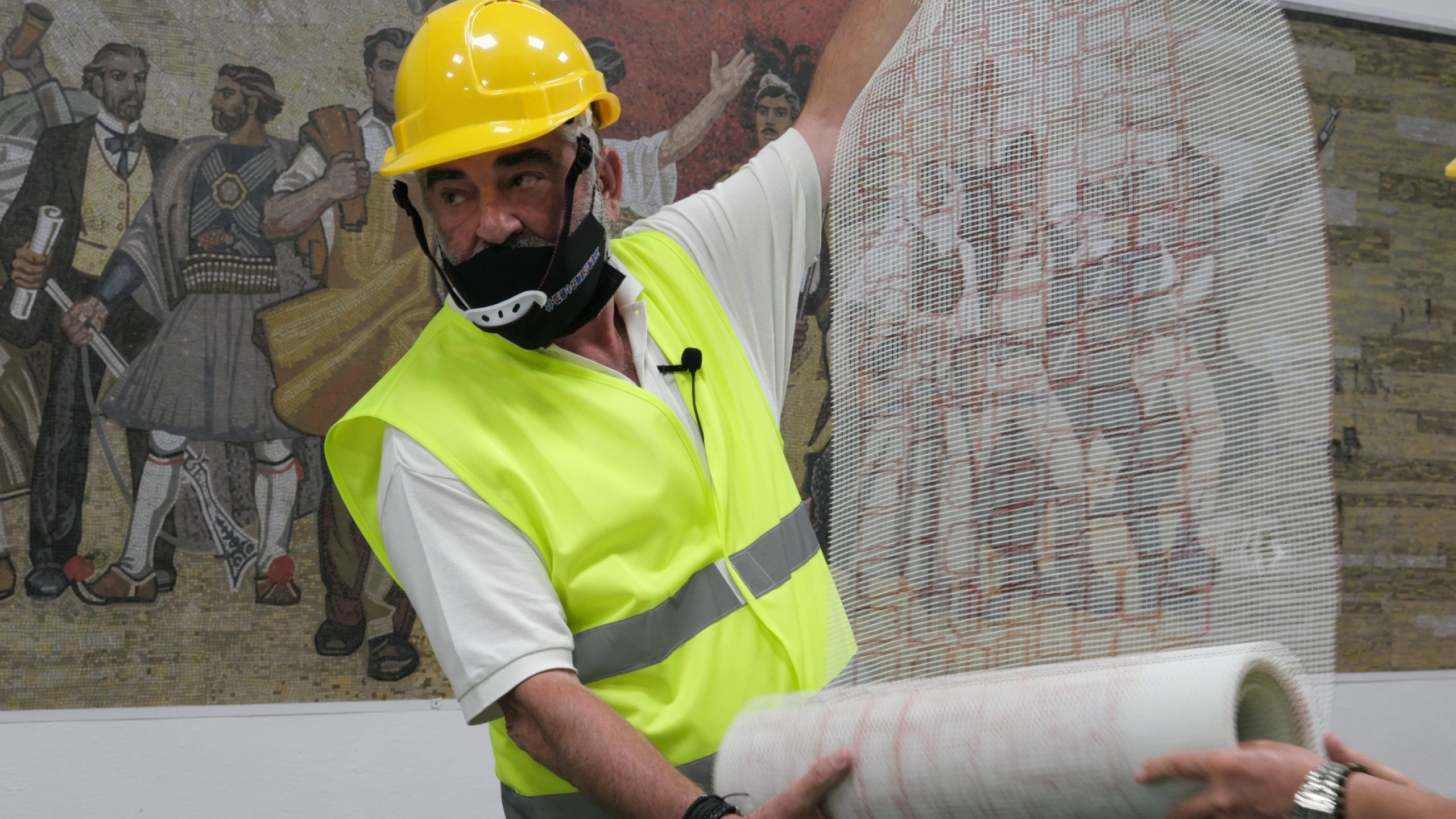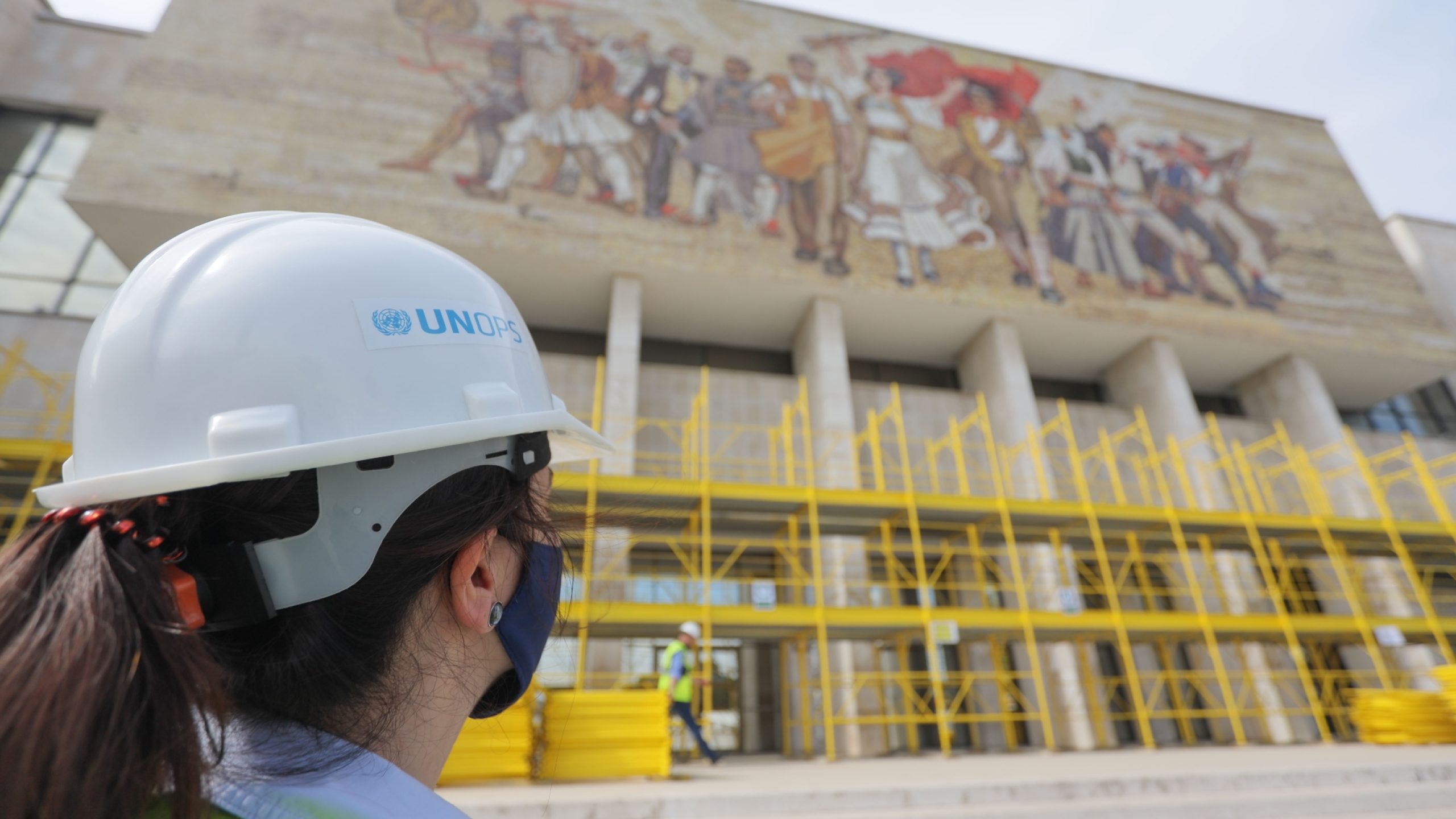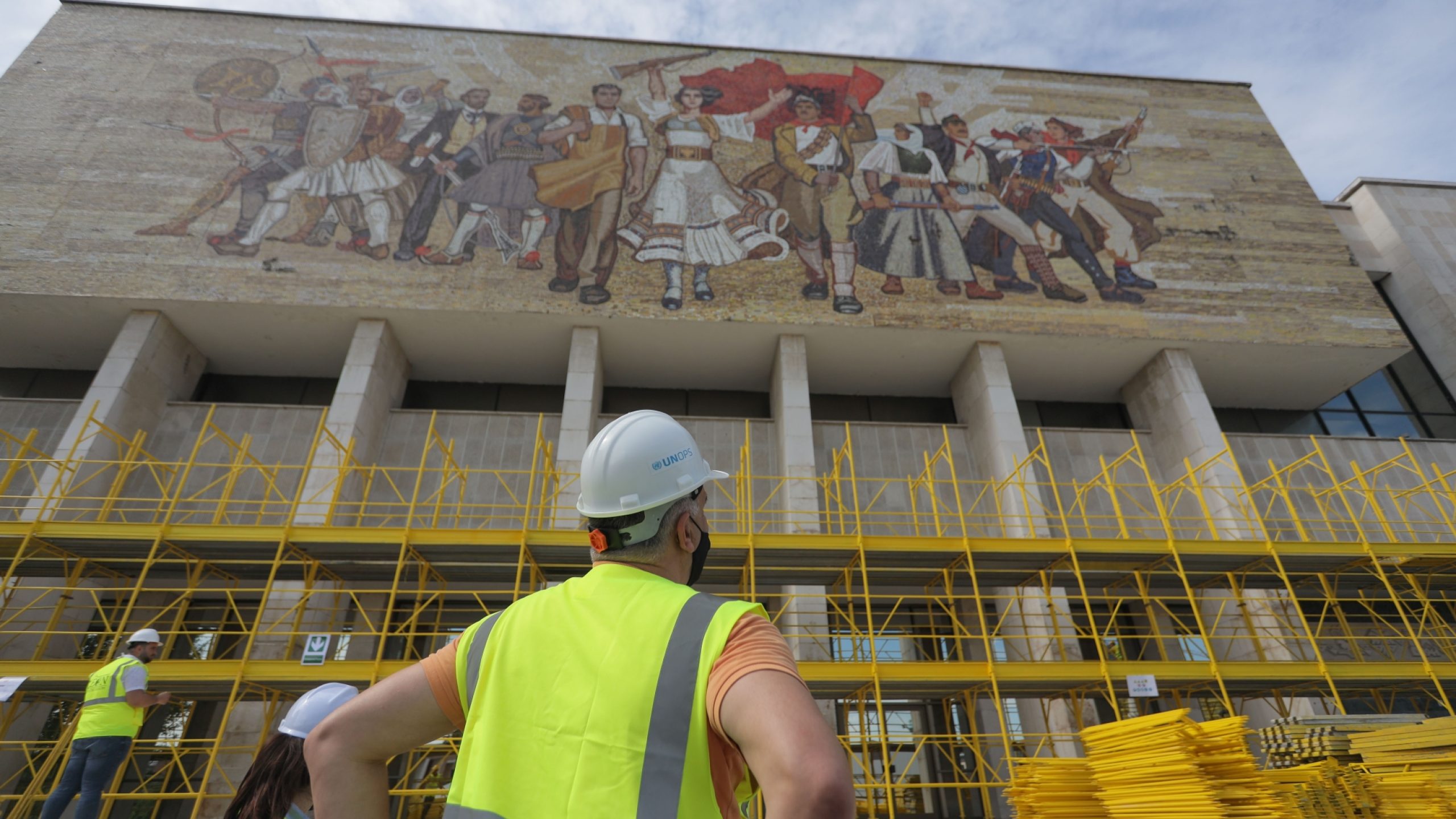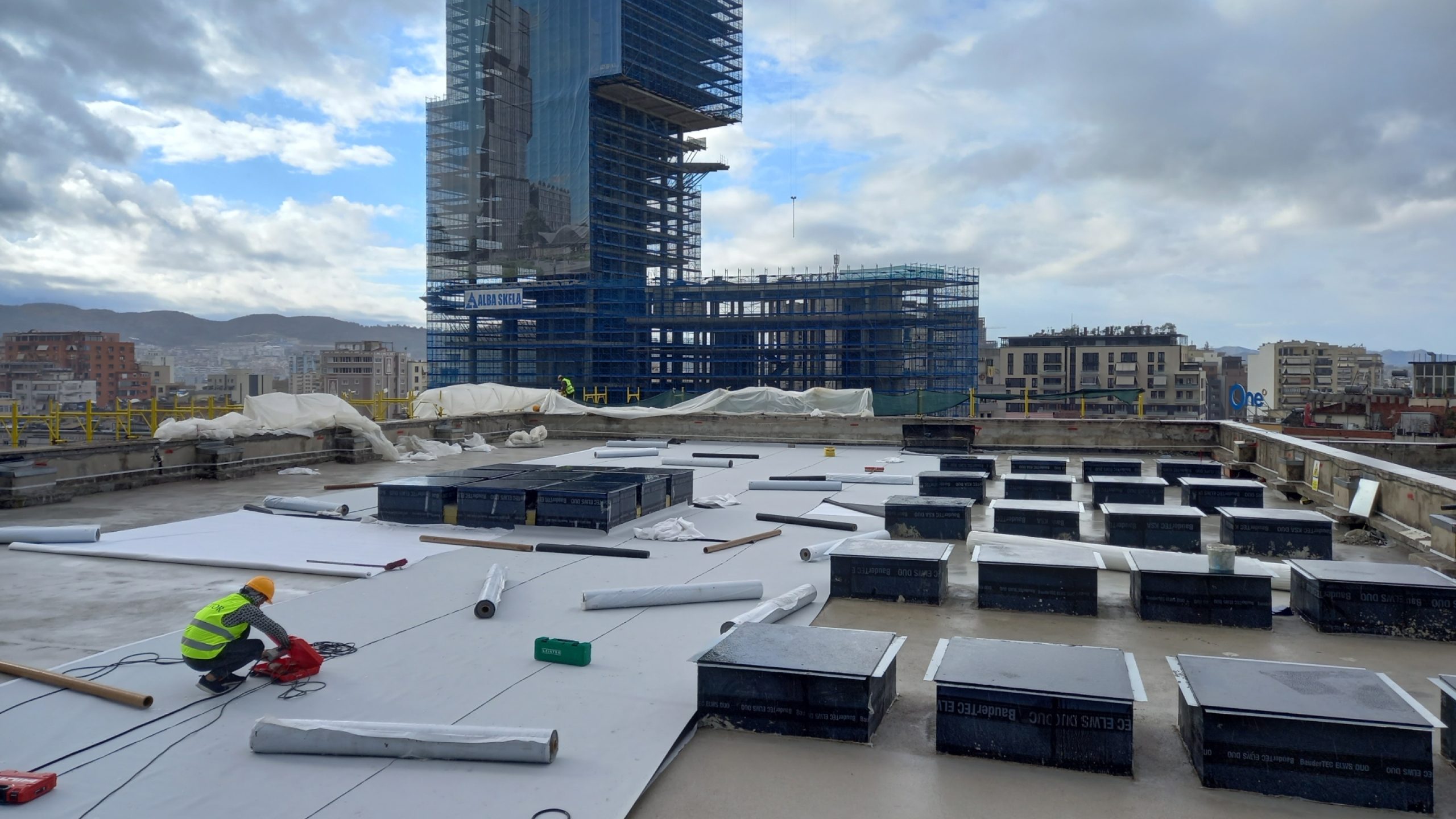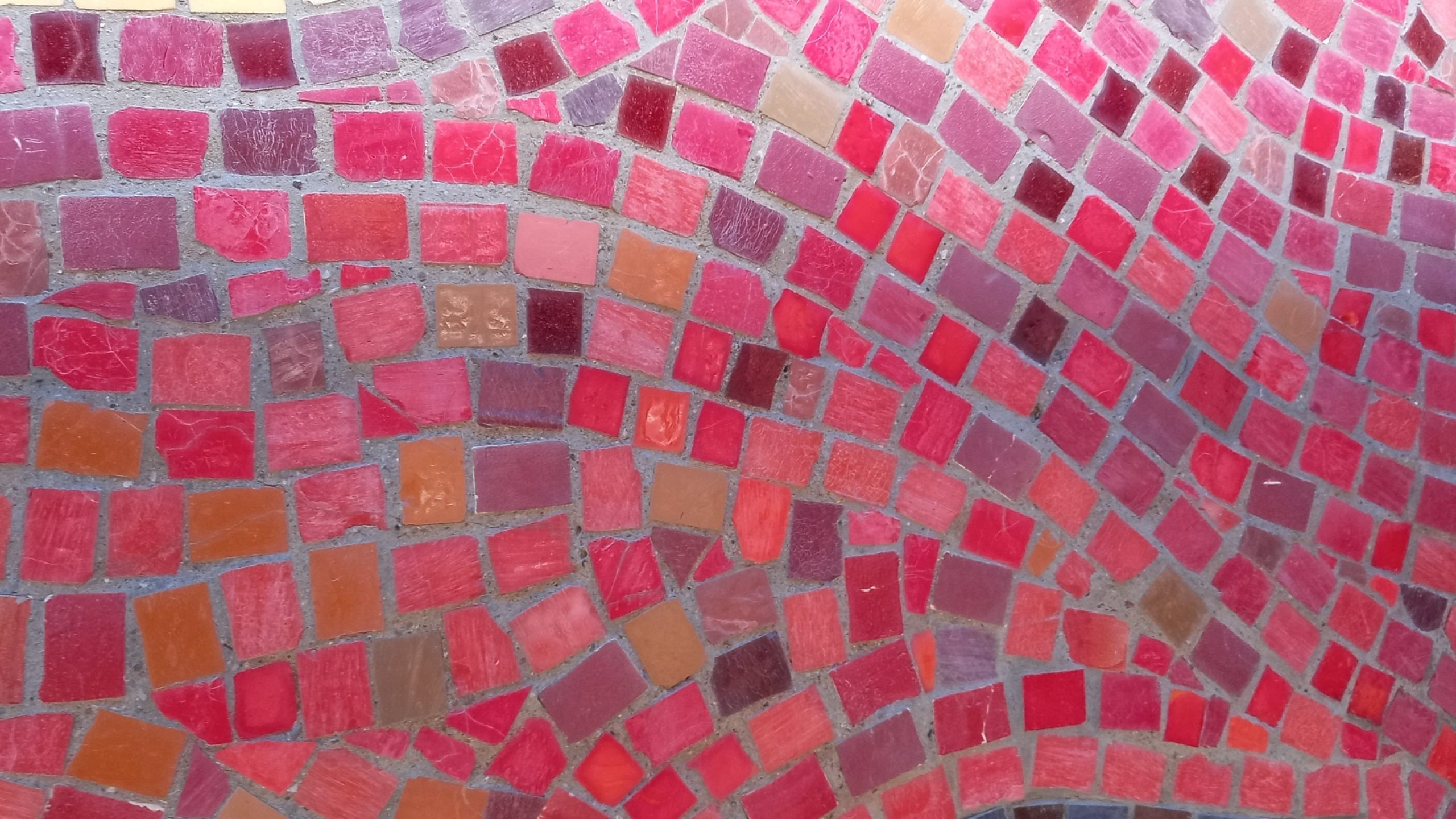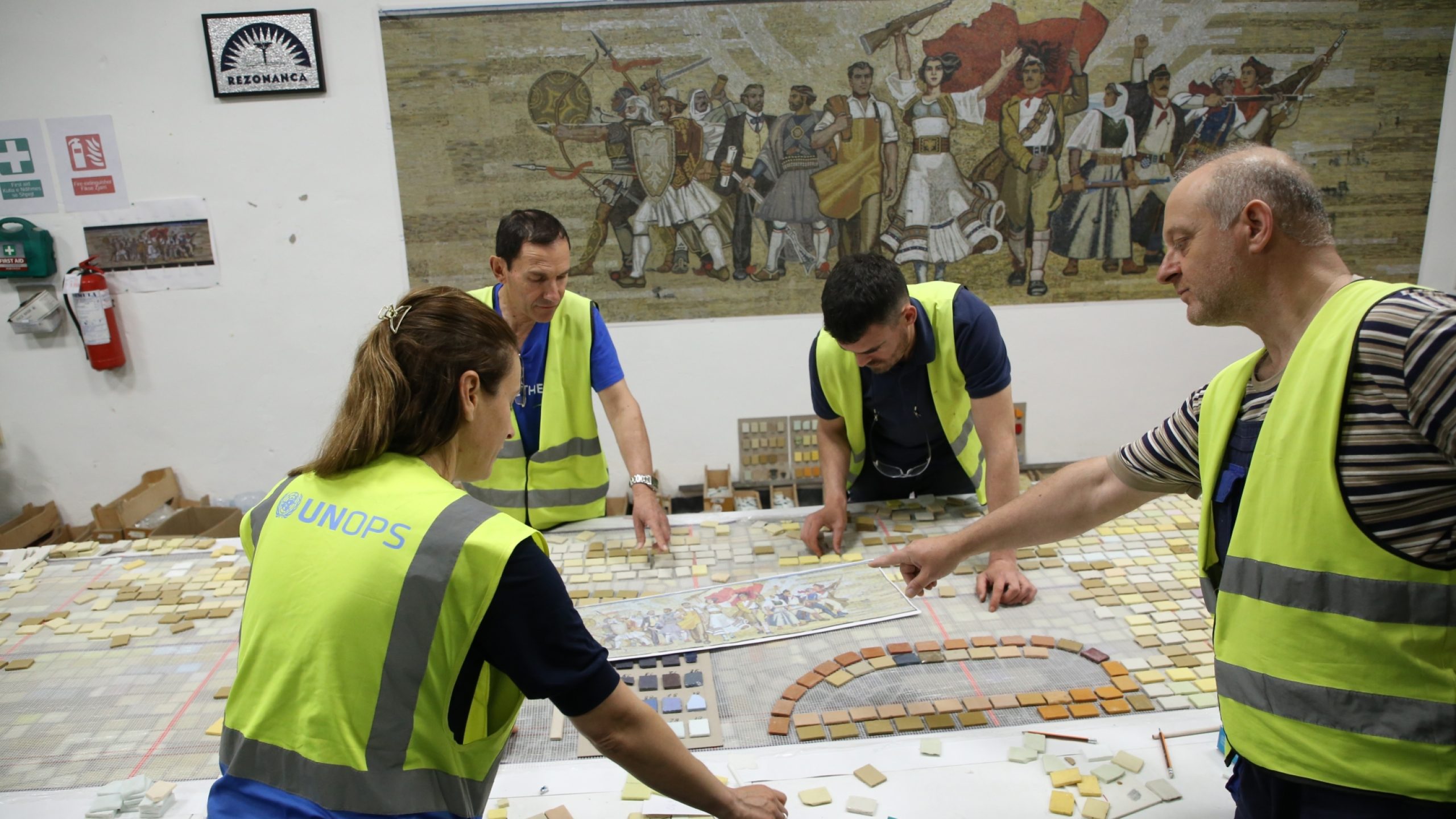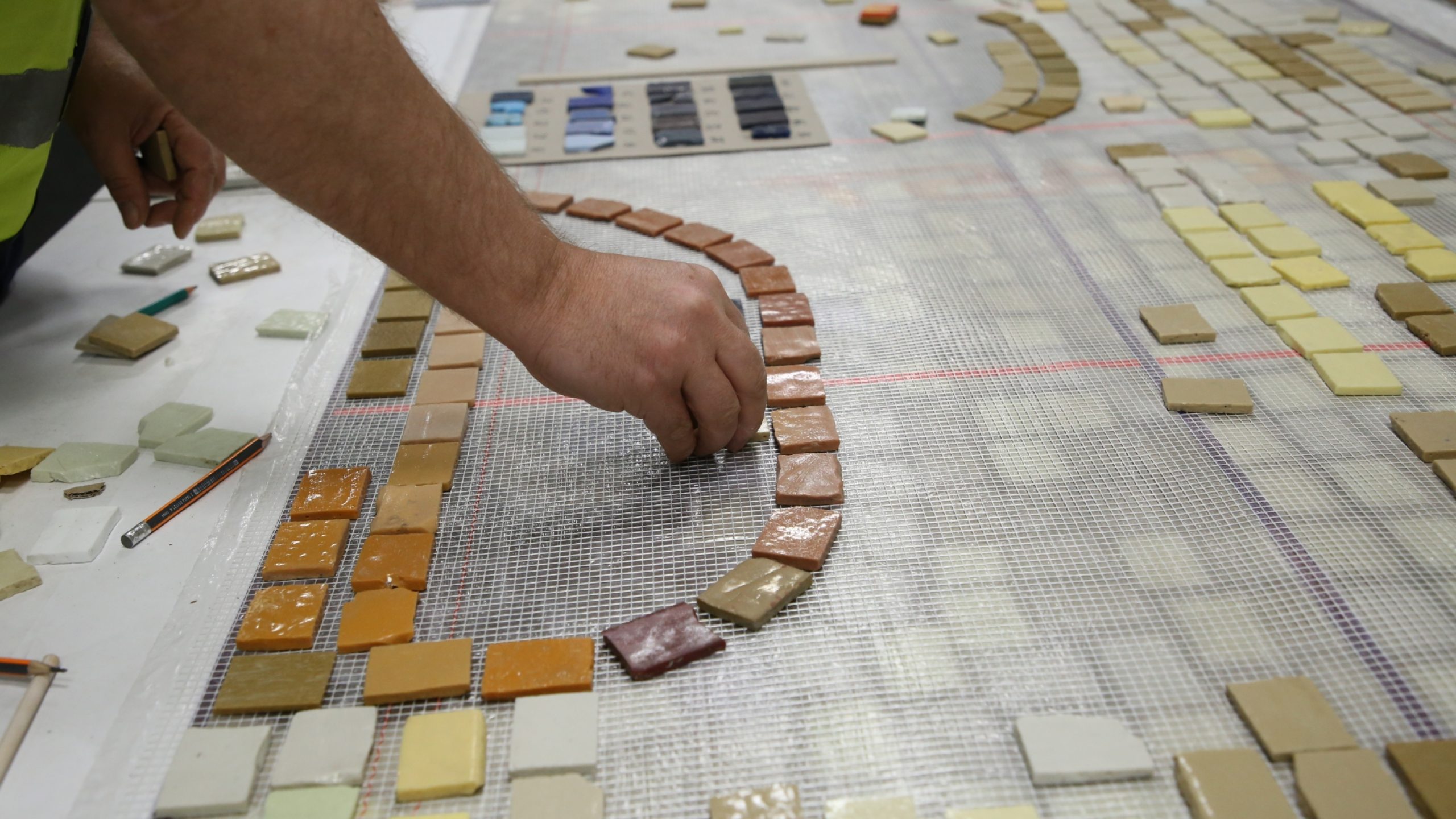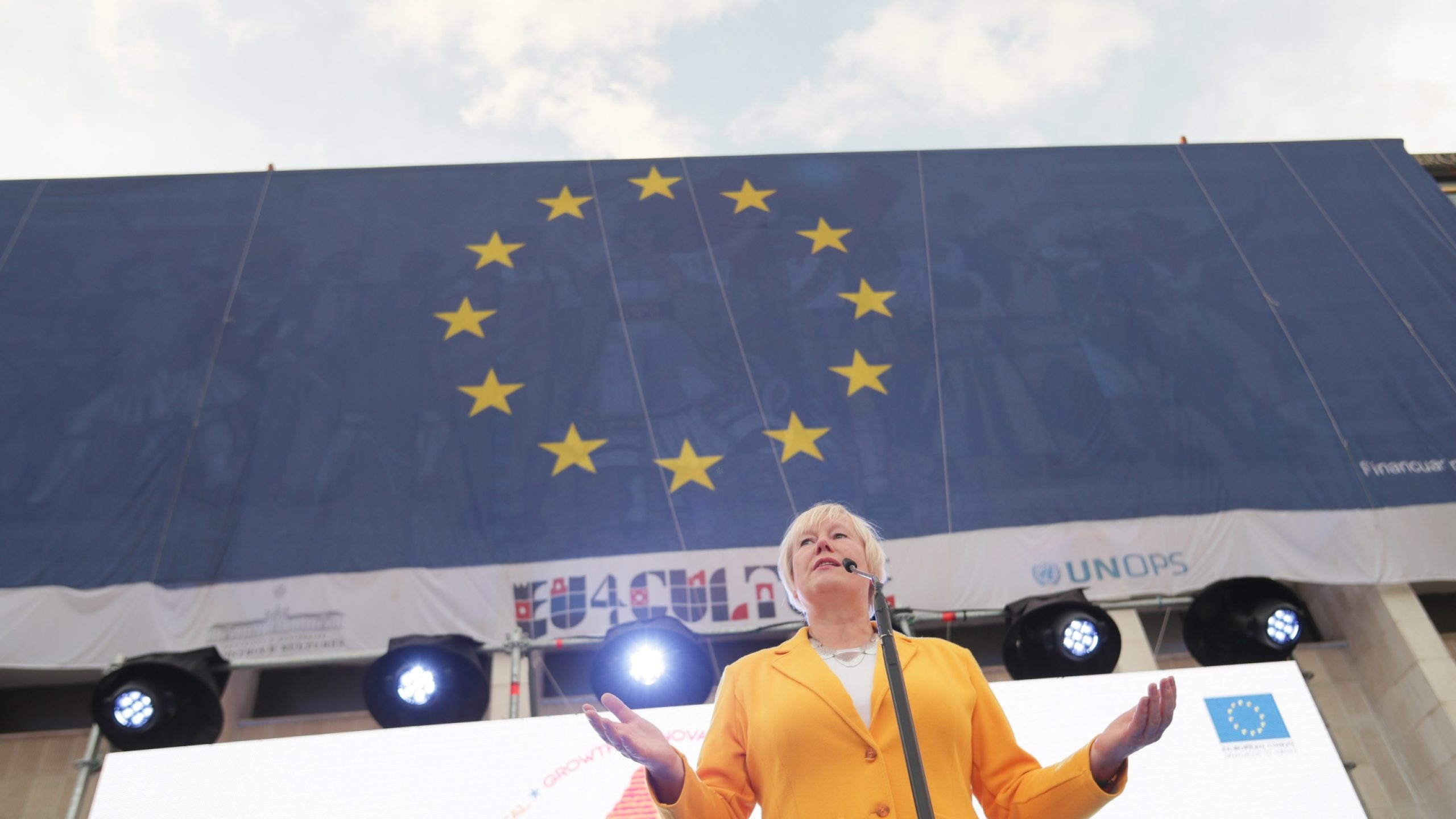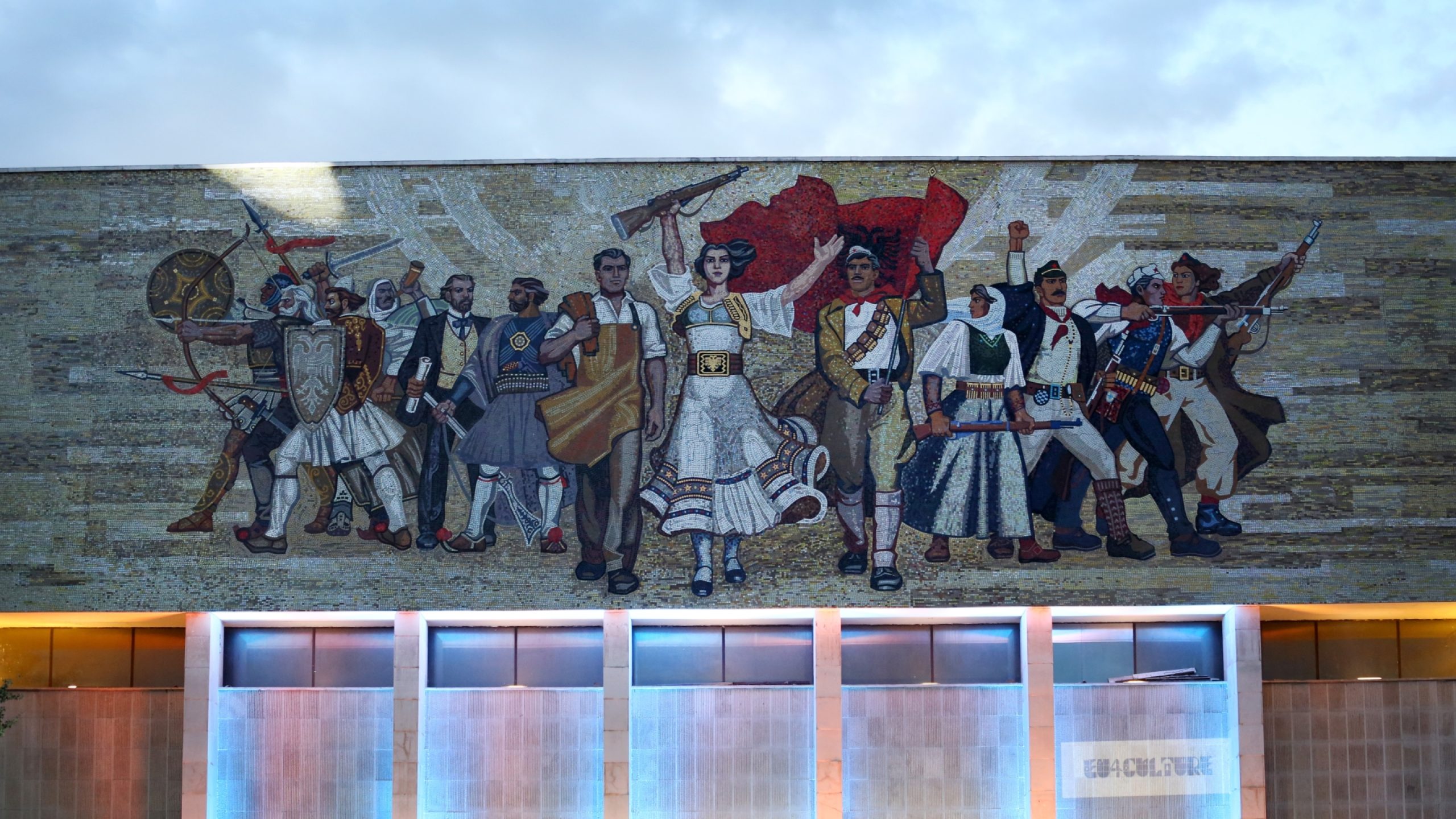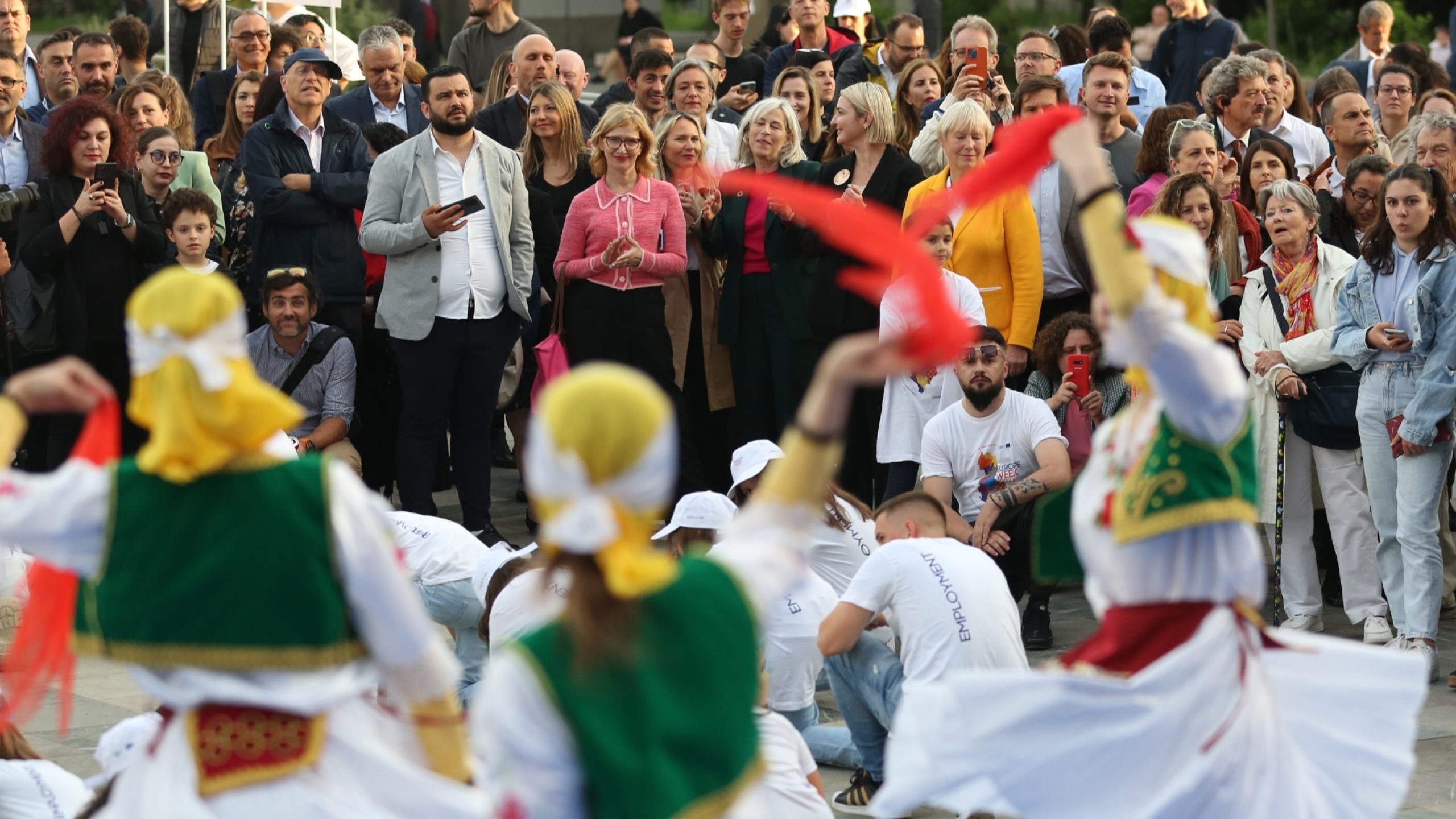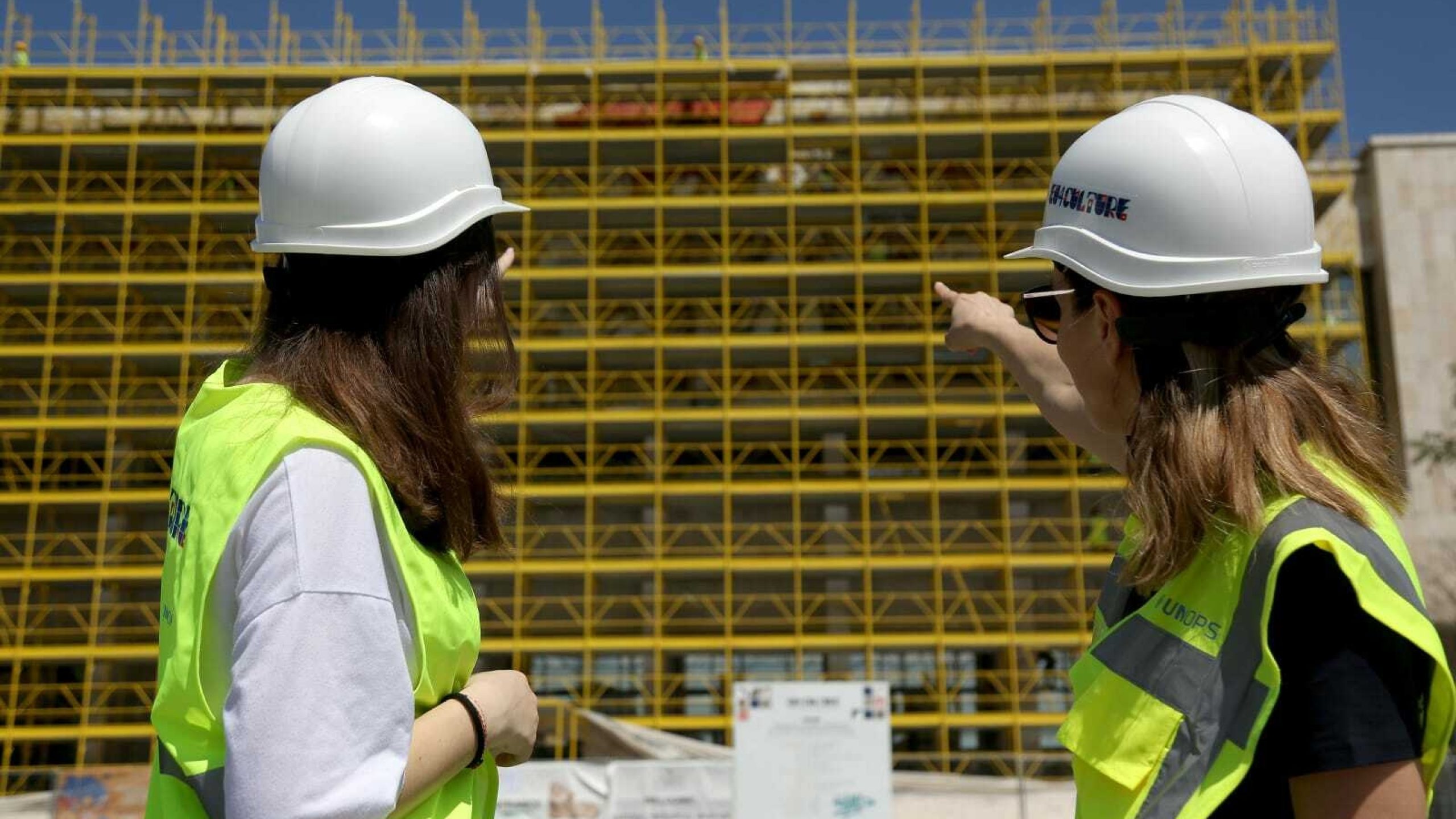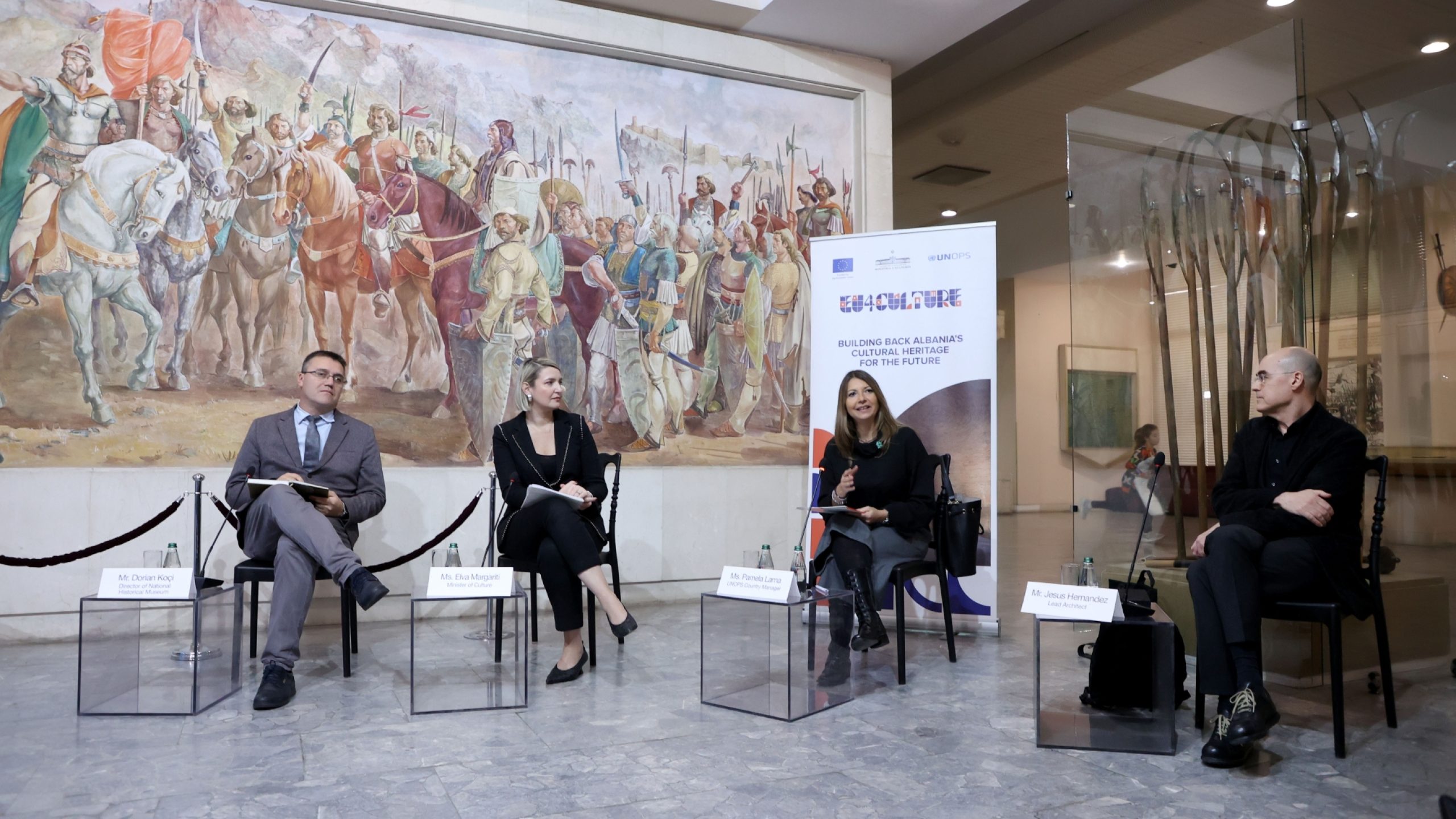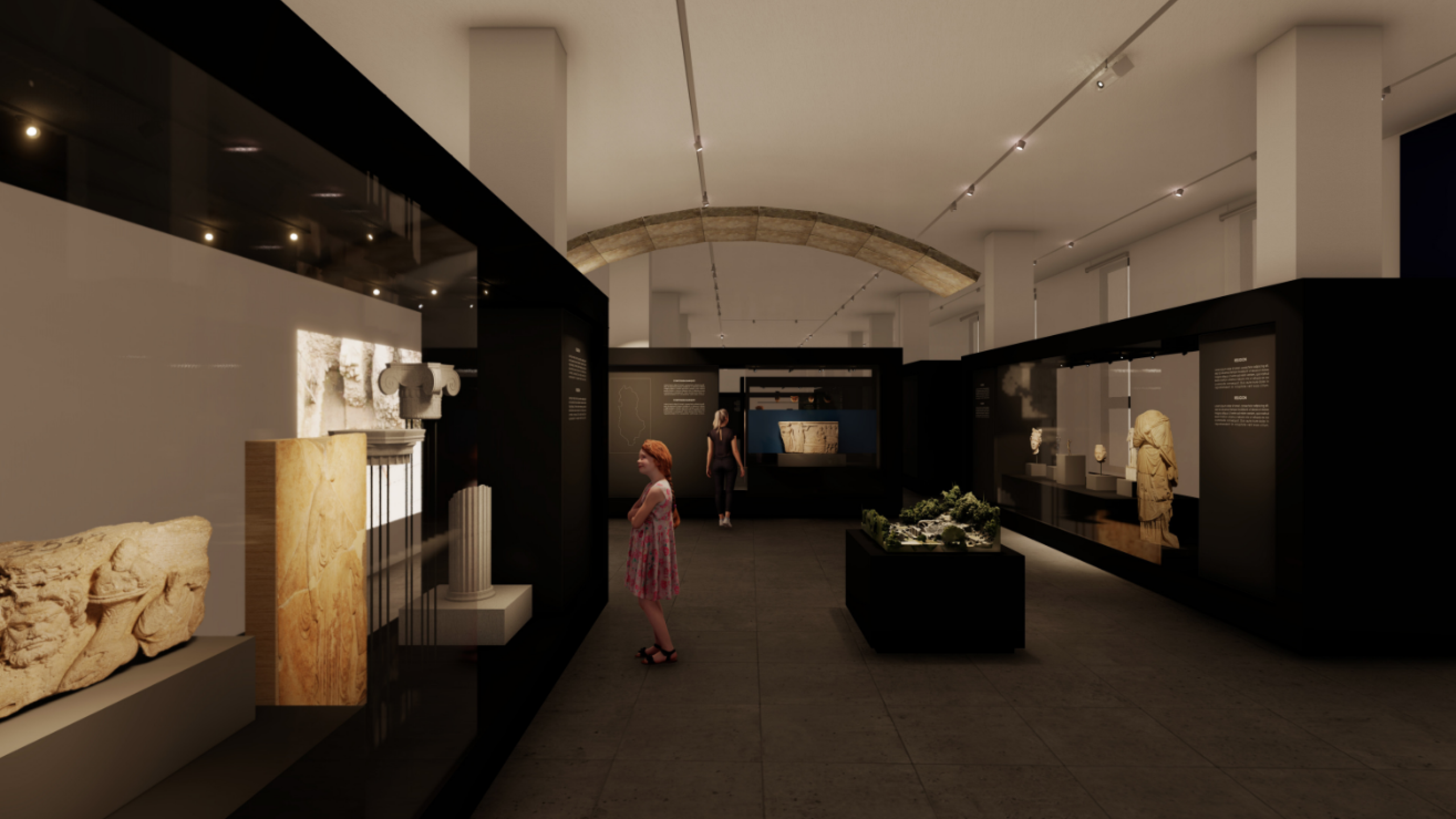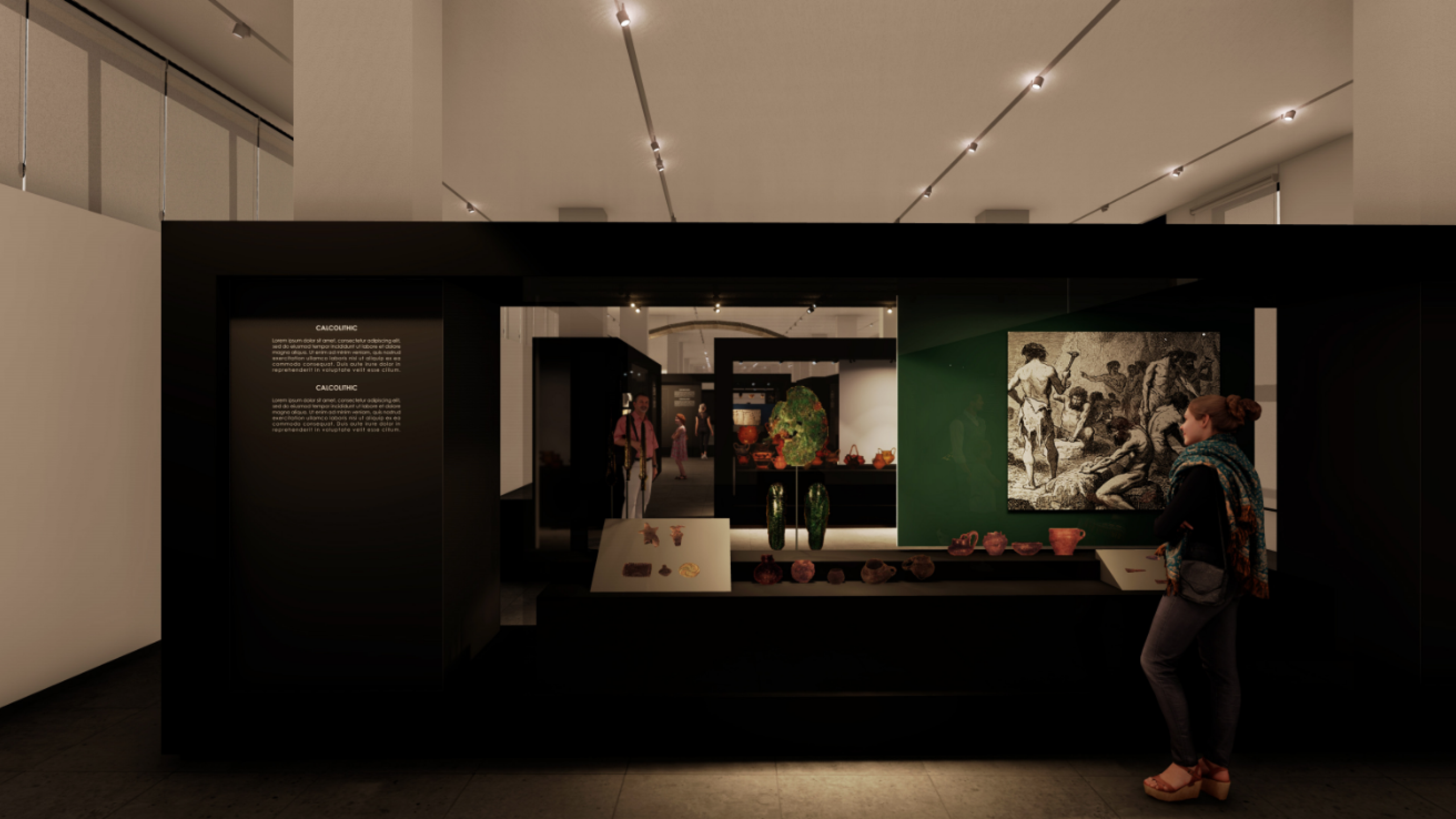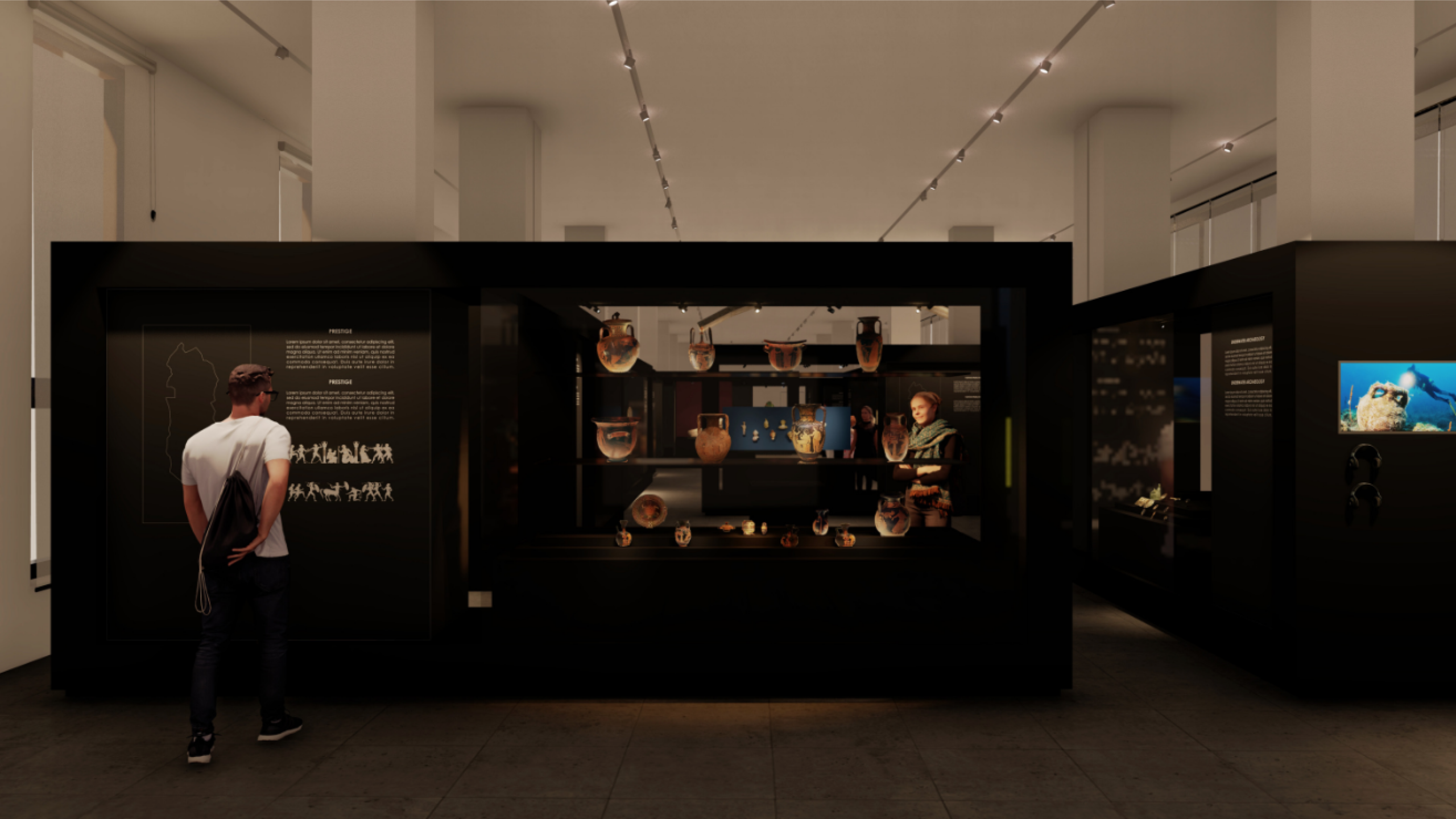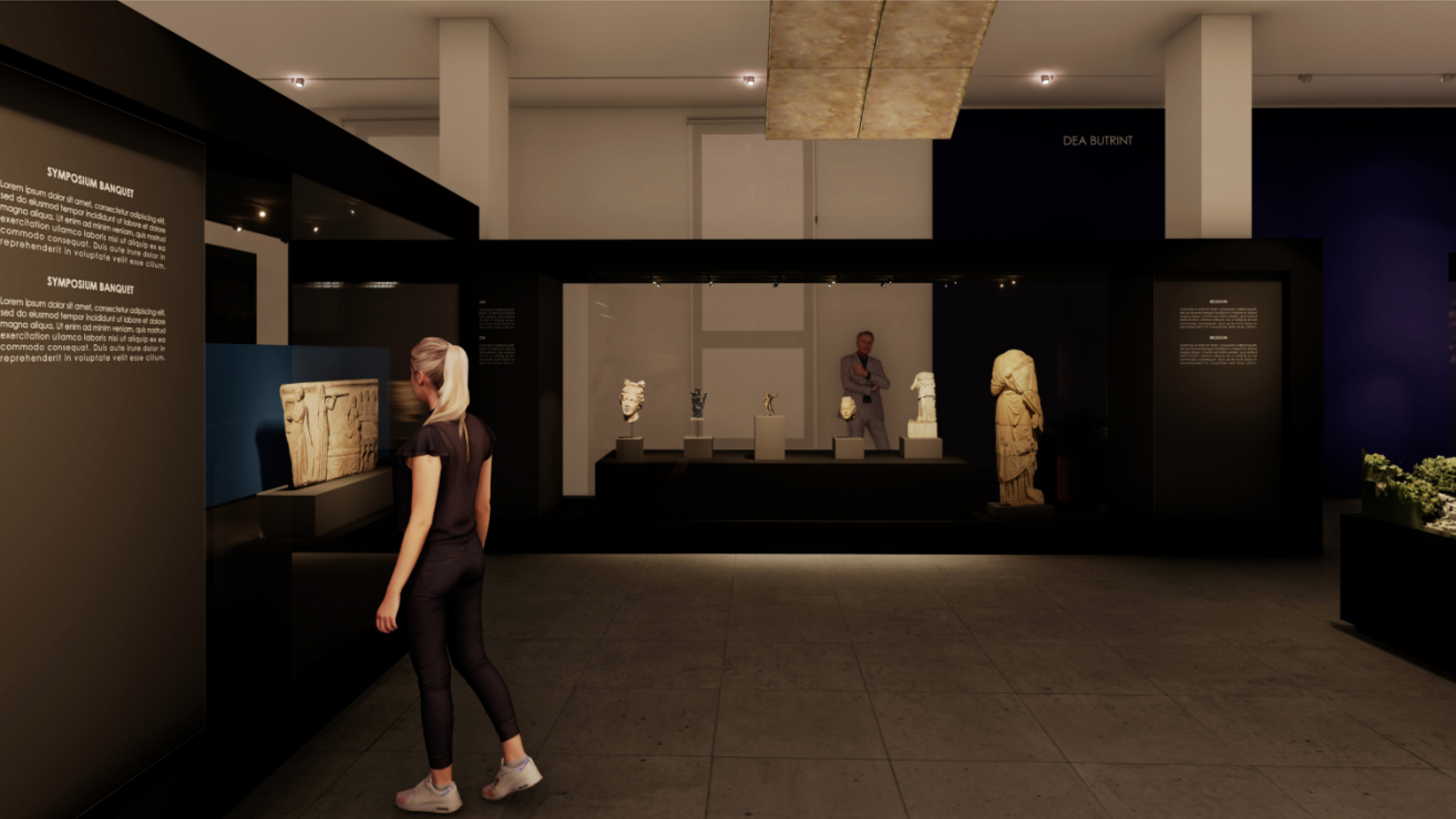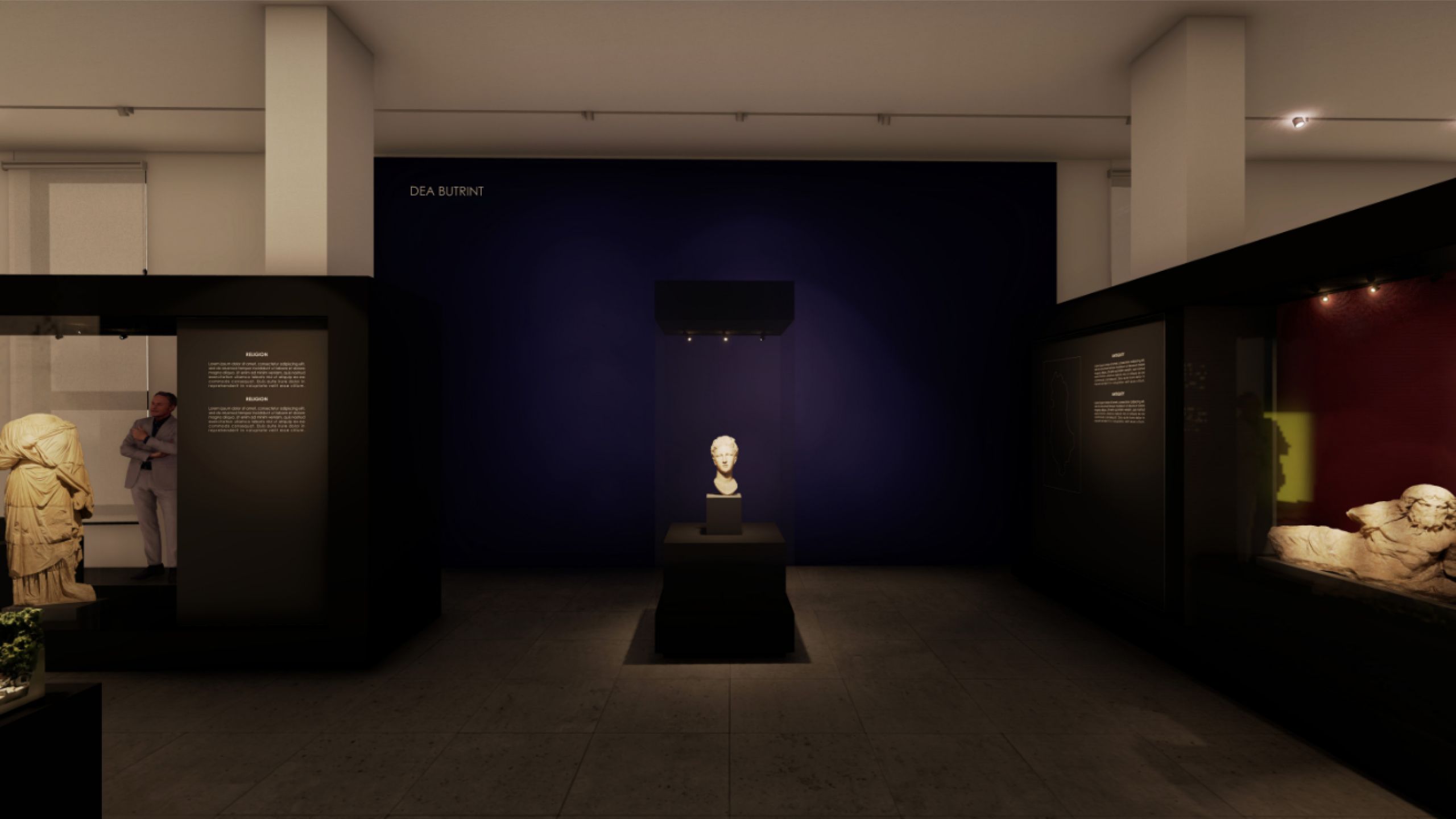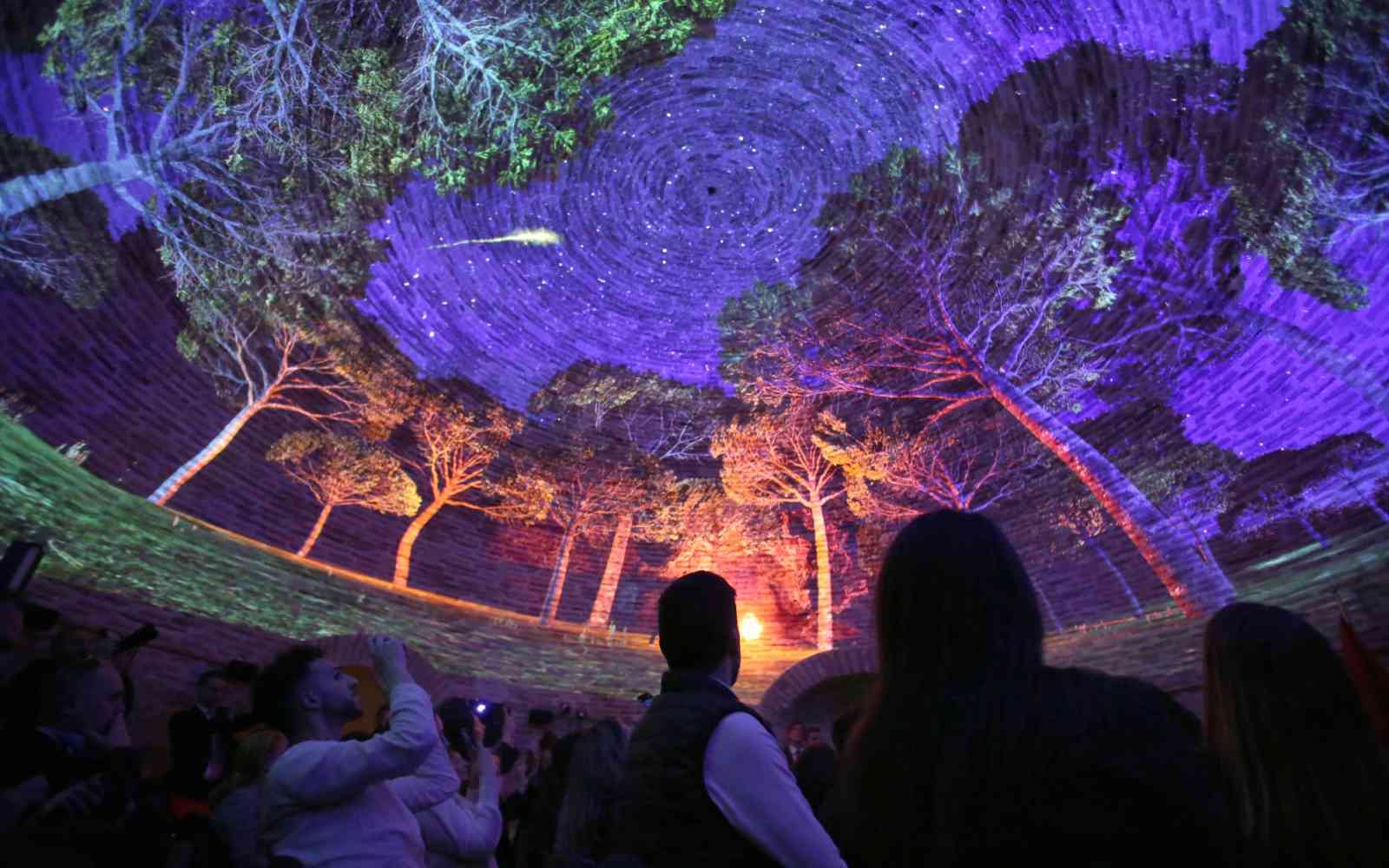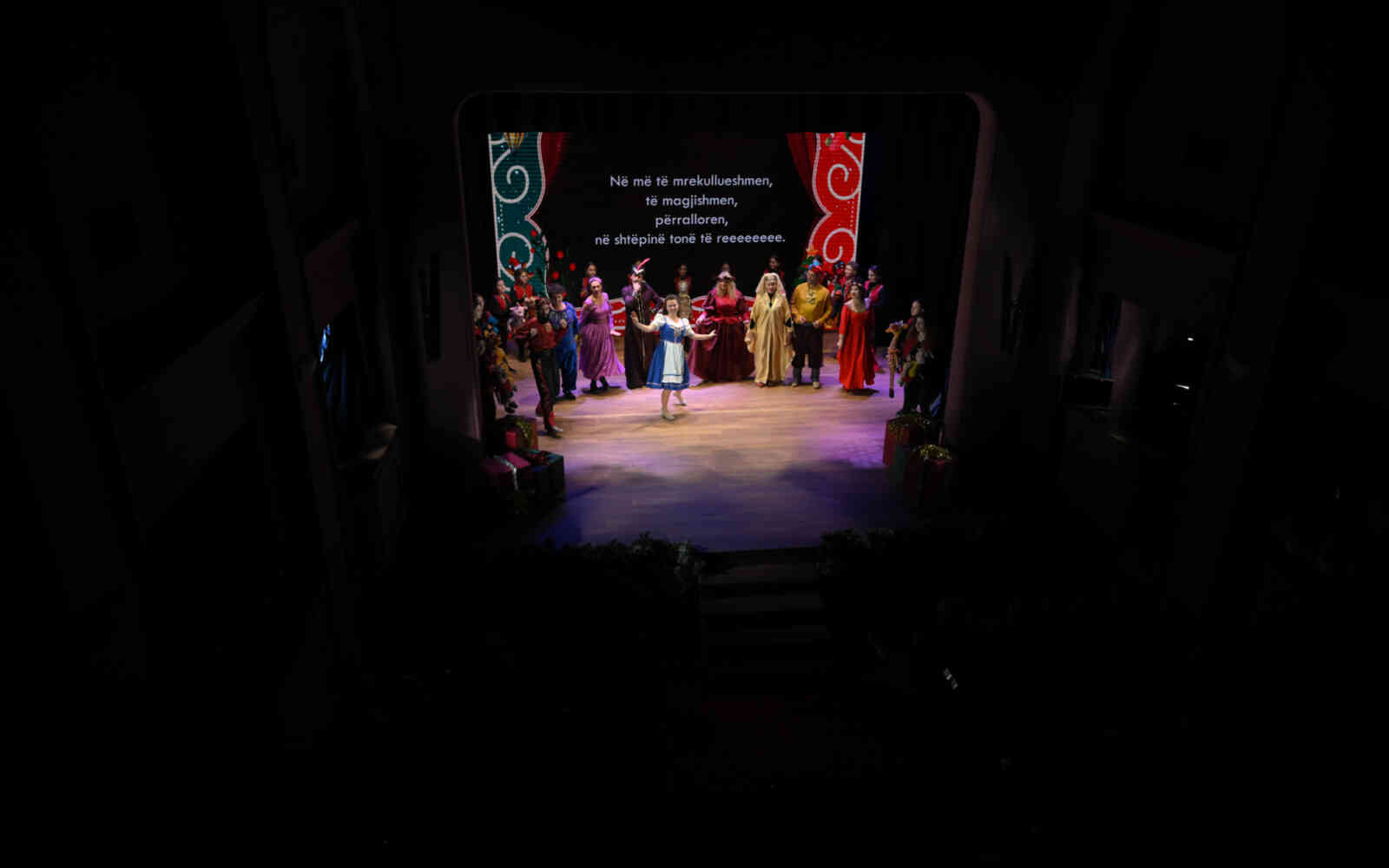The United Nations Office for Project Services (UNOPS)

Preserving the Past, Embracing the Future
The restoration of Albania's National Historical Museum rekindles the spirit of its cultural heritage, showcasing the resilience of its iconic mosaic.
Discover an in-depth look into the restoration process and inauguration of the famous mosaic on the front of the National Historical Museum in Albania.
UNOPS and the European Union (EU) have joined forces for the EU4Culture project in Albania, one of the EU's largest cultural heritage programmes. In collaboration with the Ministry of Culture of Albania, UNOPS is implementing the project, which restores and revitalizes 24 culturally significant heritage sites that suffered damage during a devastating earthquake.
The €40 million project will enhance tourism services by integrating cutting-edge technologies, such as virtual reality tools, to create immersive and interactive experiences for visitors. It will also support the socio-economic development of local communities by promoting traditional crafts and cultural tourism.
By developing cultural heritage management and business plans, the EU4Culture project ensures the long-term financial viability and profitability of the sites while also expanding their functions and services. Through this collaboration, UNOPS and the EU are making significant contributions to the sustainable development of Albania's cultural heritage sites while also addressing the digital divide and promoting accessible education.
As part of this project, the EU4Culture team has renovated the famous mosaic that adorns the National Historic Museum in Albania’s capital, Tirana. This iconic mosaic overlooks Skanderberg Square, standing as a visualization of Albania’s rich cultural heritage.
We look back at the painstaking process of renovating this important national icon.
The mosaic adorning the front of the National Historic Museum is a renowned masterpiece of late Albanian Socialist Realism. Created in 1981, it is widely regarded as one of the finest examples of this artistic style. Spanning an impressive 565 square meters, the mosaic depicts significant moments from Albania's history, ranging from ancient times to the Communist era. The intricate design was the work of esteemed artists such as Vilson Kilica, Josif Droboniku, Agim Nebiu, Anastas Kostandini and Aleksandër Filipi.
In November 2019, Albania was struck by a catastrophic earthquake, the strongest in the last 50 years, measuring 6.3 on the Richter scale. The earthquake had a devastating impact, causing widespread destruction across 11 municipalities. Unfortunately, the mosaic, a valuable cultural treasure, was not spared from the destruction. It suffered significant damage, becoming a poignant symbol of the tragedy that unfolded.
In May 2021, EU4Culture brought together a diverse team of experts for the restoration project. The team consisted of engineers, technologists, conservation and restoration specialists, and even some of the original artists who worked on the mosaic in the 1980s. They set up an on-site workshop and began the restoration process. Through careful consideration and consultation with the relevant individuals, the team decided on the best approach to restoration. Their goal was to preserve the original elements as much as possible while also considering the techniques and materials used originally.
The team faced several challenges while restoring the project. They had to construct a tall scaffolding, reaching 22 meters, to protect the facade. The scaffolding was designed to stand on its own without touching the mosaic. This was a significant engineering task. The team spent considerable time and effort to find the best solution, with a primary focus on ensuring the safety of the workers.
A team of expert conservators, along with students from the University of Tirana, painstakingly documented the vast mosaic surface, which spans an area larger than a standard basketball field. The process involved manual documentation using a plastic net and tracing paper. They meticulously recorded hundreds of thousands of individual stones, known as tesserae, at a 1:1 scale. In total, they identified, analyzed and documented 123 different color tones present in the mosaic.
Upon closer examination, it was revealed that water leakage from the roof had seeped into the cracks of the mosaic, causing the iron reinforcement bars beneath to rust and expand, leading to the formation of cavities. Additionally, some of the original pigments in the tesserae reacted poorly to the moisture and temperature changes, resulting in fractures. To address these issues, repairs were necessary for the roof. During the process, it was discovered that the layers added to the roof over the years were five times thicker than anticipated during the initial design phase. This unexpected thickness led to the removal of over 437 tons of debris, followed by the replacement of the roof with new insulation and levelling to ensure proper drainage of rainwater away from the mosaic.
The authors of the mosaic collaborated with the EU4Culture team to facilitate the ordering and purchase of tesserae from the original studio in Venice, Italy, where they were crafted four decades ago. This task proved to be quite challenging due to various complexities involved. The experts had to consider factors such as sourcing the minerals, the influence of external and oven temperatures, external humidity levels, thermal fluctuations during production and many other variables. Unfortunately, certain minerals required for producing the original tesserae were no longer available. In response, chemists and technologists went the extra mile to meticulously identify and create materials that precisely matched the original color tones.
The restorers approached the mosaic restoration by dividing it into segments. Each damaged segment was treated as a separate panel, where rusted iron bars and tesserae were replaced with new ones in the affected areas. This process spanned a period of 24 months, during which the entire mosaic surface was thoroughly conserved and after that varnished with meticulous care to ensure waterproofing and longevity.
In May 2023, the restoration of the mosaic was officially inaugurated in a special event. The ceremony was the highlight event of Europe Week 2023 in Tirana. Prior to the ceremony, a flashmob, organized by the EU Delegation, took place. The Ceremony was attended by UNOPS Austria Multi-Country Office Director Freya von Groote, UNOPS Country Manager Pamela Lama, EU Ambassador to Albania Christiane Hohmman, Minister of Culture Elva Margariti, UN Resident Coordinator Fiona McCluney, mosaic authors and restorers and other distinguished guests in front of the museum entrance.
In the second half of 2023, the restoration efforts at the building of the National Historical Museum will enter a new phase. EU4Culture has developed a design to enhance the museum to meet modern international standards. Various museum pavilions will be restored to include state-of-the-art technology and interactive exhibits. These enhancements will offer visitors an immersive experience, allowing them to delve into the country's abundant heritage and culture.








